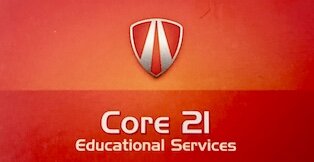The Age of Exploration, PBL Unit
This was written for Grade 5 students by Beth Caroll
CORE 21; UNIT PLANNING WORKSHEET Name: Karen Estevez
Use this to outline your unit. You can type directly on this sheet. 1. Unit topic: Ants
2. Duration of Unit: 3 weeks
3. Topic ideas: This can be a list or a graphic organizer.
4. Standards: These will come either your own state standards or from the Common Core Standards. Include:
● Twenty-first century skills and standards
● Content Standards
1
CCSS.W.K.2, CCSS.W.K.5, CCSS.RI.K.1, CCSS.RI.K.2, CCSS.RI.K.5, CCSS.SL.K.1, CCSS.SL.K.2, CCSS.SL.K.6, CCSS.L.K.1, CCSS.L.K.2, CCSS.L.K.6,
5. Objectives: Write your objectives for student mastery clearly using the verbs of Bloom’s taxonomy such as analyze, create etc.
- Identify and label the parts of the body of the ant. - Summarize facts about ants.
- Explain ant life cycle.
- Compare ants to other insects.
- Design and create an ant robot.
- Write a how-to text describing how to make an ant robot.
6. Have students discuss what they will be doing and describe what they will be learning in this unit.
7. How will you assess your students?
- Informational Writing Rubric
- Daily activities
- Observations and student discussions throughout the unit.
8. Design all assessments prior to beginning instruction—this is the heart of backward design. This has to be carefully thought out.
- Create an ant robot that can help solve class problems. Use droid pieces to help the robot move, and art materials to make robot body look like an ant.
2
- Write a how-to book describing how you made your ant robot.
9. Design rubrics for your assessments for all of the concepts and standards you will
be working on.
I will be using the Informational Writing Rubric and Checklist provided by our writing program, which will be embedded into this unit.
10. Clearly work out and share your unit’s essential questions.
- Why are ants insects?
- How do ants change throughout their lives?
- In what ways can ants help us solve our class problem? - What special abilities do ants have?
11. If you are working on a problem or project based unit (both are known as PBL) design out your entry activity.
- Preparation:
Beforehand, prepare four stations around the classroom. Each station will have a sign with a number from 1-4 to help students identify work areas. Project student groups on the board, so students know which are their individual stations.
- Step 1:
Each station will have a Ziploc bag with pieces of a puzzle inside. The puzzles will be of ant pictures. Each group must work together to build their puzzle. All puzzles must be glued to construction paper and labeled with the names of the students in each group.
3
- Step 2:
In their groups, have students discuss these three questions:
What is our STEM project going to be about?
What do you know about ants?
What do you want to learn about ants?
- Step 3:
Agree as a class which color of post-its will be used for what the students know, and which will be for what they want to learn. Students will write what they know and what they want to learn about ants using a single post-it for each sentence or phrase they write. Then they will stick their post-it on KWL chart.
- Step 4:
Gather in the meeting area. Read and discuss what students wrote in the KWL chart.
12. If you are working on a PBL, clearly work out your statements of the problem to
be solved.
This unit is based on the school’s STEM Fair. This year the theme is Biomimicry (the ability man has of imitating nature). Students have identified the following class problem:
School supplies constantly fall on the floor from pencil cases. Students get tired of constantly stepping on or picking up their materials.
They will try to solve by mimicking the ants, as they have the ability to clean up after themselves very quickly and effectively.
4
13. Plan your anticipated sequence of instruction for the unit.
- Ants are insects
- Ant life cycle
- Ant habitat and food
- Ant fun facts
- Ants as problem solvers
14. What will you have to differentiate?
- Even though all my students are able to draw and label their pictures, some students are able to write longer and more complete sentences in English. Lower students will be asked to draw, label and write simple sentences, whereas more advanced students will be encouraged to include more details in their writing.
- When working in groups, students will be paired with peers that are the same level to help them stay motivated throughout the unit as well as feel comfortable communicating in English regardless of their oral abilities.
- Informational texts that will be used throughout the unit have different GR levels, so that all students are able to access information about the topic.
15. What needs have to be addressed?
Buy books and droid robot parts on time.
16. Anticipate potential problems.
Have enough art materials in the classroom so students can build ant robot. Droid parts might not work: contact parent to help out with assembly. Internet failure: robot app might not work without internet
16. Check the level of rigor.
- Acquisition (Quadrants A): Students will be able to identify parts of the body of ants, as well as explain the life cycle of ants and compare them to other insects.
5
- Assimilation (Quadrant C): Students will summarize facts about ants.
- Adaptation (Quadrant D): Students will apply their knowledge about ants to create a robot that will help them solve class problem. They will also write a how-to text to explain how they made their robot.
17. What instructional tools do you need?
- Projector
- How-to writing paper
- Informational Writing illustrated checklist, and rubric. - Art Materials
- Books about ants
- Internet
18. What vocabulary do you have to teach?
- habitat
- antennae - head
- thorax
- abdomen - larva
- egg
- pupa
- ant hill
- colony
- queen
- drone
19. If you are working on a PBL students will have to make a final presentation. Plan your audience.
Our final presentation will be the day of our STEM Fair, which is April 27t h. Parents will be invited to school to see their children present what they have learned. Student work will be displayed around the classroom and students will be divided into groups to explain each part of the project:
- Facts about ants
- Class problem
- Ant robot
6

